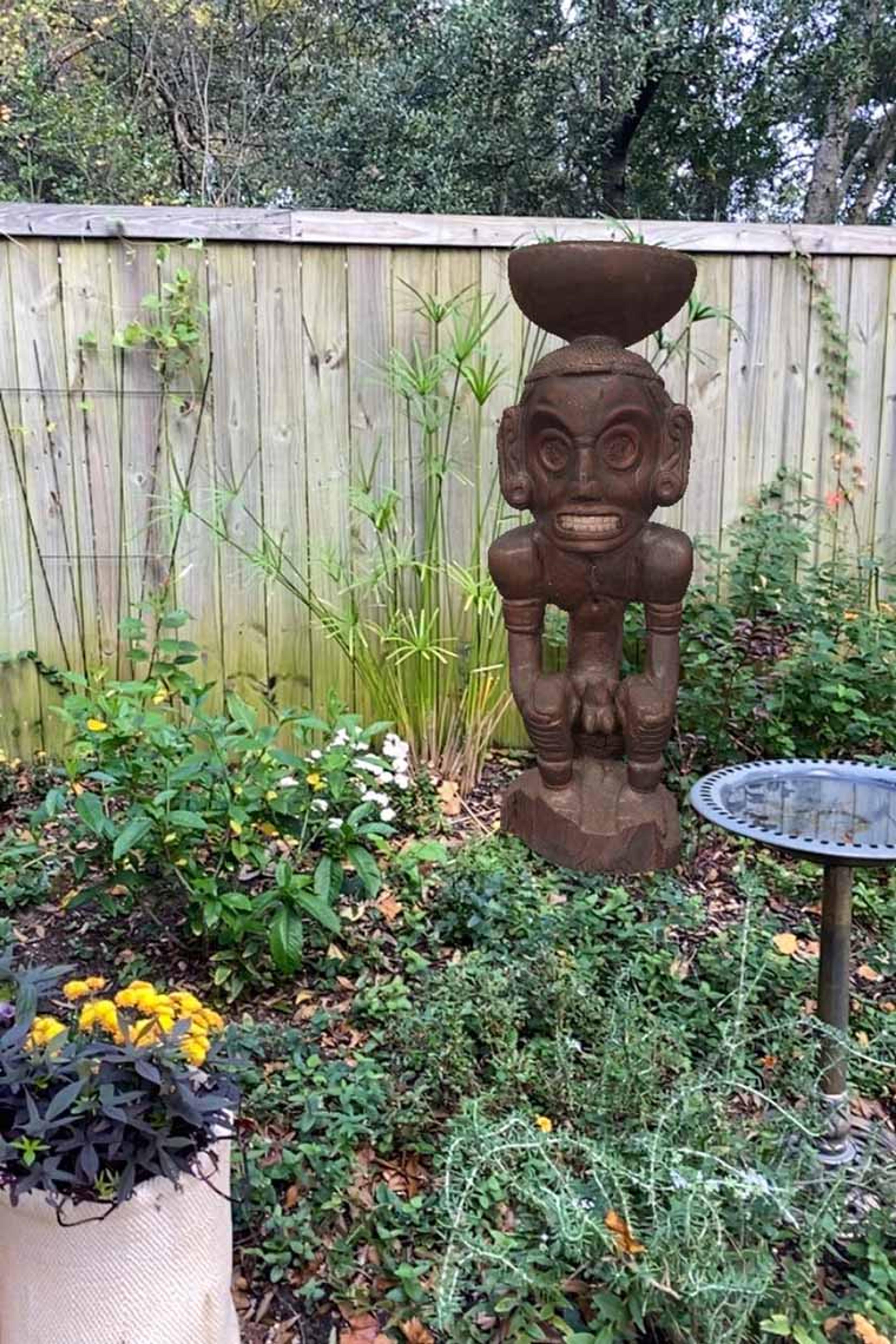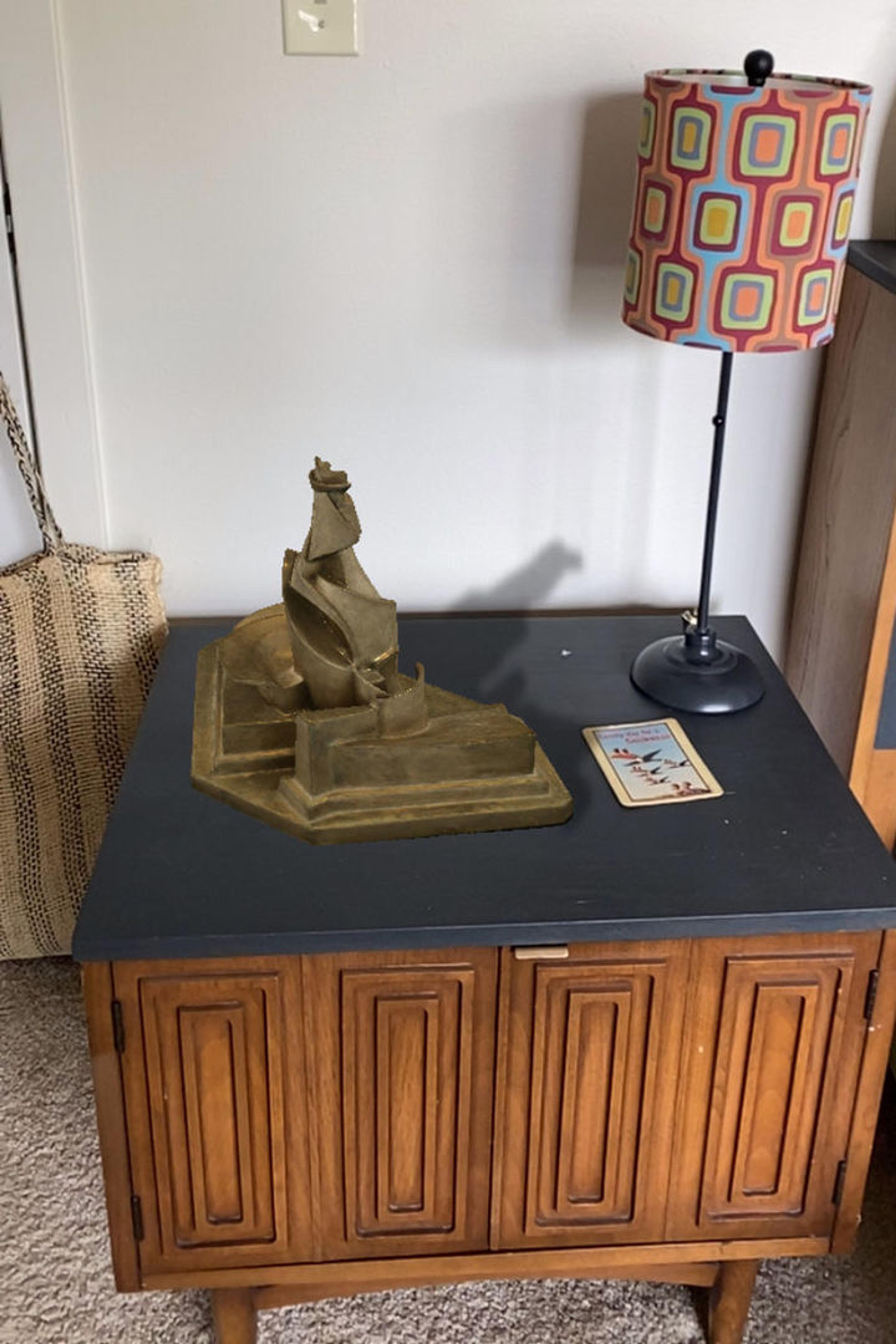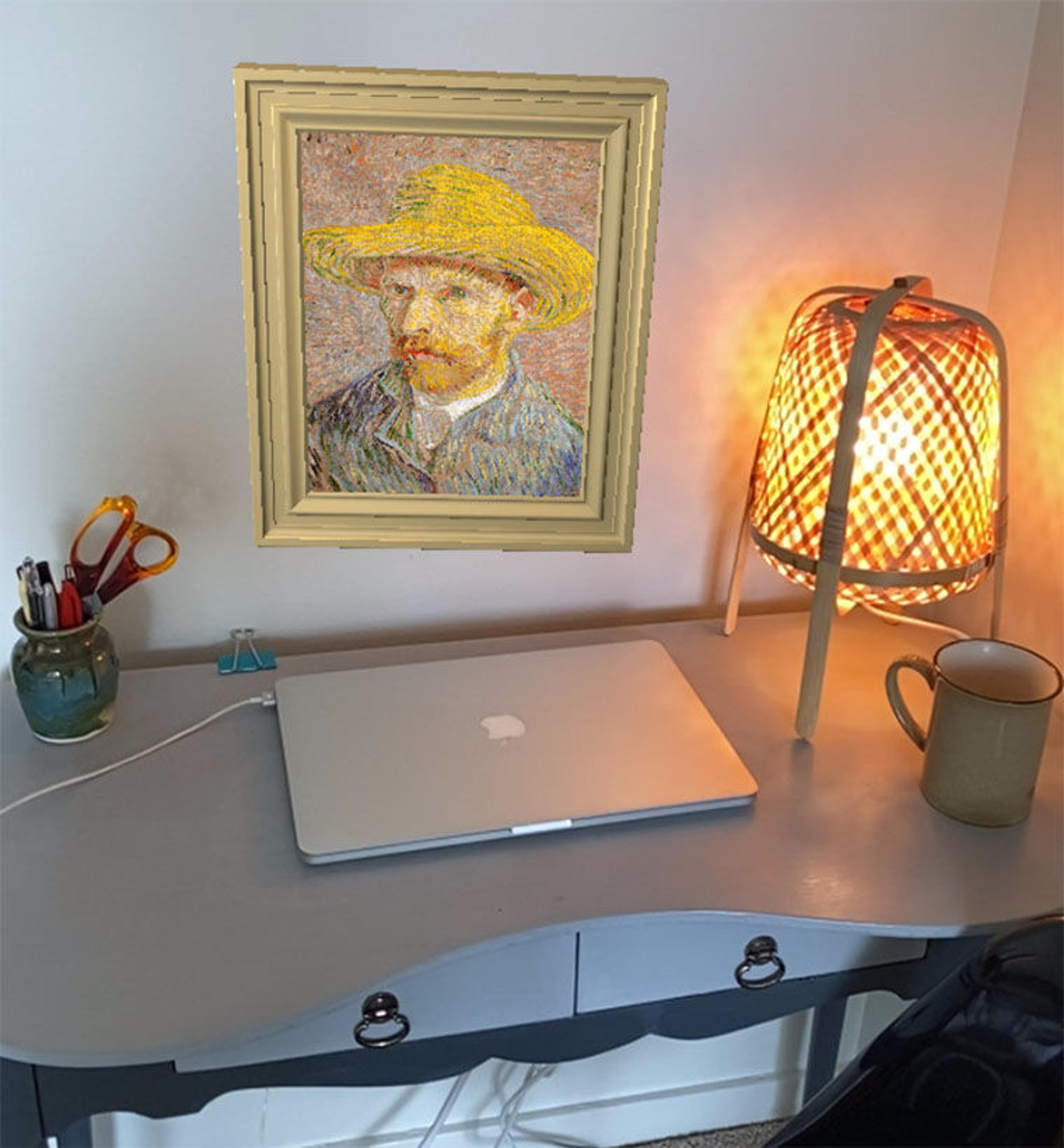Met objects can now appear virtually in your own home, thanks to the three new AR effects on Instagram.

You’re reading this correctly: yes, you can bring art home from The Met. It may sound surprising, but thanks to this week’s launch of a new series of augmented reality (AR) effects designed for Instagram, you can do just that with three objects in the collection.
In a first for The Met, Instagram users can explore three works of art in 3D using the back-facing camera on their phone. This offers a new opportunity for virtual engagement—one that brings you up close with objects in The Met collection, especially for those who might not be able to make it to the Museum this fall.
You’ll find that you can spin the objects in 360 degrees, move around them yourself to look from all angles, and zoom in for an extreme close up (even closer than you can get in real life)! Don’t forget to turn your sound on when using the effects; as you explore, you’ll hear more about the artworks and artists who made them, plus a few details to look out for.
After you’ve explored the objects, bring them into your space—place the object and snap a screengrab to capture how it looks wherever you are. What would a van Gogh look like on your bedroom wall? How about showing off an iconic Taíno sculpture in your living room? Or maybe try out a Boccioni sculpture in your backyard? Using these effects, you can do that and more—no matter where you are in the world. (And don’t forget to share your images on Instagram with #MetEffects—we’d love to see it in your space!)
“Discovering a new work of art together in your living room with your kids is an incredibly powerful thing,” says Facebook’s Sue Young, Director of Product for Spark AR. “The Met has one of the broadest collections of art and objects in the world—and this mix reflects that, with all the varied interests and diversity of The Met’s fans, too. … With AR, you get to put your spin on art: Place it on your wall. Scale it up or down, rotate it. It’s an experience that is impossible without AR. And what would that new insight inspire in you?”
As an extension of The Met’s educational mission, this AR project is just one example of the Museum’s larger efforts to explore how digital technologies can create new forms of engagement with objects in our Open Access collection, inspire art-lovers around the world, and bring digital access to artworks for audiences across platforms. The effects were created using Spark AR, Facebook’s open platform for AR creation.
Come take a peek on The Met’s Instagram page to find the objects you can explore through AR.

Deity Figure (zemí) (detail), ca. A.D. 1000. Dominican Republic (?). Taíno. Wood (Guaiacum), shell, 27 x 8 5/8 x 9 1/8 in. (68.5 x 21.9 x 23.2 cm). The Metropolitan Museum of Art, New York, The Michael C. Rockefeller Memorial Collection, Bequest of Nelson A. Rockefeller, 1979 (1979.206.380)

Umberto Boccioni (Italian 1882–1916). Development of a Bottle in Space, 1913, cast 1950. Bronze, 15 1/2 x 23 3/4 x 15 1/2 in. (39.4 x 60.3 x 39.4 cm). The Metropolitan Museum of Art, New York, Bequest of Lydia Winston Malbin, 1989 (1990.38.2)
Zemí cohoba stand
A Taíno artist from the Caribbean sculpted this wooden zemí, meaning deity or ancestor, around A.D. 1000—and today it’s one of the most iconic sculptures that survives from the ancestral civilizations in the Americas. In religious ceremonies, leaders would have consumed ritual substances from the flat surface on top.
Using the effect, you can zoom into the sculpture. Notice the tears extending from the figure’s eyes past his shell teeth. This crying zemí may represent the creator of rain, one of the many characters in Taíno oral histories.
Want to see it in real life? The zemí cohoba stand is currently on view in Arte del Mar: Artistic Exchange in the Caribbean. Met staff also recently brought this object to life in AR for iOS on your iPhone.
Try out the zemí cohoba stand effect on Instagram and Facebook.
Umberto Boccioni’s Development of a Bottle in Space
While Italian artist Umberto Boccioni first saw sculpture as a “mummified art,” he would later use it to capture the dynamism of the modern world. His Futurist sculptures, like Development of a Bottle in Space, reflect an interest in an object’s external and internal forms and how we animate them as viewers.
Try turning this bronze work around. Notice how it seems to unfold and spiral into the surrounding space?
Try out the Boccioni sculpture effect on Instagram and Facebook.
Vincent van Gogh (Dutch, 1853–1890). Self-Portrait with a Straw Hat (obverse: The Potato Peeler), 1887. Oil on canvas, 16 x 12 1/2 in. (40.6 x 31.8 cm). The Metropolitan Museum of Art, New York, Bequest of Miss Adelaide Milton de Groot (1876–1967), 1967 (67.187.70a)

Van Gogh’s two-sided self-portrait
When van Gogh lacked money for models and fresh canvas, his ingenious workaround was to paint self-portraits and reuse old canvases. As you explore van Gogh’s lively self-portrait in bold colors, turn this canvas around to discover the other side.
On the reverse, you’ll find a peasant study from Holland, titled The Potato Peeler, in what had been van Gogh’s earlier typical dark palette. This one canvas offers a compelling record of the significant changes he made to his style when in Paris, and his evolution as a modern figure painter.
Try out the van Gogh self-portrait effect on Instagram and Facebook.
Test out each experience on your phone—click the links above to start exploring, and don’t forget to show us how you’re engaging with the effects! Share your experience with #MetEffects.
